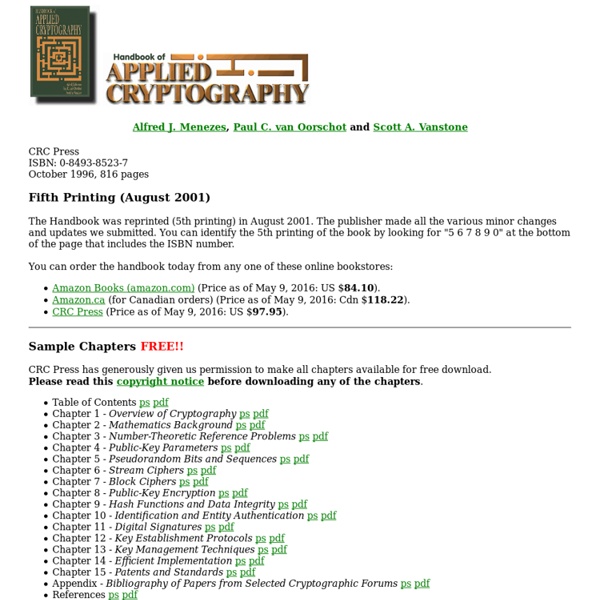



Aho/Ullman Foundations of Computer Science This book has been taken out of print by W. H. Freeman. You are welcome to use it if you like. We believed in 1992 it was the way to introduce theory in Computer Science, and we believe that today. --- Al Aho and Jeff Ullman Index The Book | Materials | Gradiance | Errata PDF's of the Book PrefaceTable of ContentsChapter 1 Computer Science: The Mechanization of Abstraction Chapter 2 Iteration, Induction, and Recursion Chapter 3 The Running Time of Programs Chapter 4 Combinatorics and Probability Chapter 5 The Tree Data Model Chapter 6 The List Data Model Chapter 7 The Set Data Model Chapter 8 The Relational Data Model Chapter 9 The Graph Data Model Chapter 10 Patterns, Automata, and Regular Expressions Chapter 11 Recursive Description of Patterns Chapter 12 Propositional Logic Chapter 13 Using Logic to Design Computer Components Chapter 14 Predicate Logic Index Supplementary Materials Gradiance Package Available Errata Sheet We are going to try to maintain errata.
TwistyPuzzles.com Forum • View topic - 3x3 into a 2x2 TomZ wrote: You must first truncate the edges of the cube like the ones of a half truncated cube. You should then glue the three edges around ONE corner to it to make sure the middle layer won't misalign. Then add some plastic sheet to the corners to make it look like a 2x2. I don't really agree wth that. 1. 2. 3. 5. 6. 7. 8. I have still yet to do this project, but I can conclude that this will work. Drewseph wrote: Oskar, we all love this world that we live in. Why does he always have the funny quotes?
eBouquin | Toute l'actualité sur le livre et la lecture numérique 2x2x2 | TecSpy It's all corners! I first obtained an East-sheen RD02 double 2x2x2 cube on Sat 23rd Aug 08. This is a tiny keychain of two 2x2x2 cubes that share a corner. I would've preferred a straightforward 2x2x2 but I'll take what comes across my path! A fascinating mechanism - there are only corner cubies! This can be quite confusing when you're only used to a 3x3x3 with its fixed centres. Dec 25th 2008: I received a white EastSheen 2x2x2 from puzl.co.uk as part of my self-directed set of Xmas presents and began my true exploration into this puzzle. A Simple 2x2x2 Method I'm terrible with algorithms so my 2x2x2 technique is a simplified 3x3x3 layer-by-layer method. solve first layer freestyle - I always use white first and solve on top (bad form, I know!) Ortega 2x2x2 Method Recently I've been trying to improve my 2x2x2 times by using the Ortega Method. Starting with week 33, I'm now using the Ortega method in the speedsolving.com weekly competition.
Comprendre et appliquer Sun Tzu 2x2x2 Methods Goal is this time to make 1 face instead of 1 complete layer. So take white for example and put all the white cubies on 1 face, not looking at there permutation. The result is that the last step is drammaticaly faster. Step 1, make a face Simply make 1 correct orienten but not permutated face. Step 2, orientate bottom corners. Now, when you have 1 face, orient the bottom corners with these algs. Note: you see that the first layer is completely solved, this is not necessary, but it's just that I'm lazy and used the images from the page where you do make one complete layer. Step 3, both layers This step is pretty easy, you can learn the first 6 cases (including solved case, but for optimization for this step, learn to do case 1, 4 and 5 from different angles. Done!!
OLL (2x2x2) These algorithms orient the top layer on a 2x2x2. Three variants of these algorithms are given depending on how they affect the rest of the cube. Algs which don't affect the bottom layer (suitable for both LBL and Ortega) are unmarked Algs which affect bottom layer permutation (suitable for Ortega only) are marked with an O (these are also useful for EG 1) Algs which mix bottom and top layers (suitable if used with Guimond-style separation) are marked with a G NOTE: For the algs marked G, the inverse of the final move may be used to create a better separation case. See also External links
PBL Permutation of both layers, abbreviated as PBL, is a step used in a number of 2x2x2 methods (and thus corners first methods). Specifically, the Ortega method and the Guimond method, perhaps the two most popular advanced 2x2x2 methods, both finish with a PBL step. When solving only corners, PBL has five unsolved cases, which can be recognized by the number of pairs on each side that are correctly permuted (a solved side has 4 pairs, an adjacent swap has 1 pair, and an opposite swap has 0 pairs), so the unsolved cases are 0+0, 1+0, 1+1, 4+0, and 4+1. It is actually possible, in theory, to do PBL in one step for 3x3x3 or Square-1 - in this case we would be permuting not only corners but the whole layers. Algorithms The first two algorithms (Y perm and A perm) only affect the top layer, and because of that, they can be used in LBL methods. Note that D moves are the same as U + y, just a different notation, what you do for real is something in between. See also External links